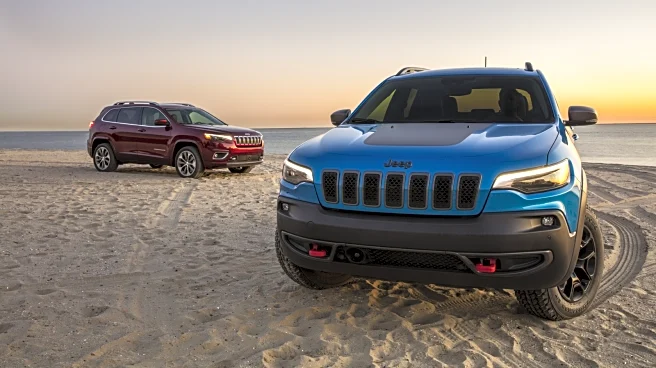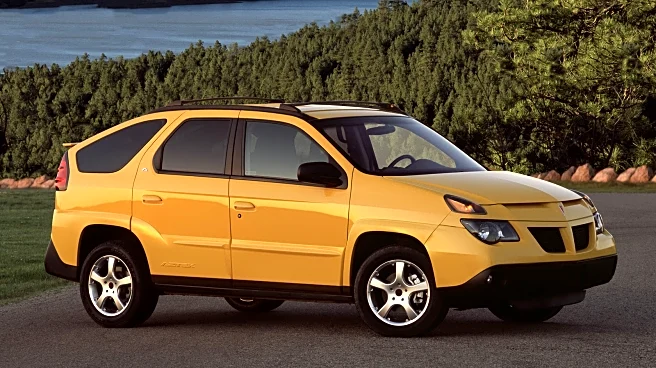
Even if we can't put a finger on the specifics in every instance, we all tend to recognize quality. The human brain is designed to enjoy symmetry, as it speaks of organization, order, and good health. So when we gaze into the headlights of an angry-eyebrowed Buick Invicta, a four-eyed Cizeta V16T, or any other car with unbelievably cool headlights, we're also subconsciously noticing whether the hood is on straight or if the bumper meets the fender properly. If the gaps are different from one side
of the vehicle to the other, it's vaguely unsettling.
Gap precision in cars is no mere cosmetic concern, however. Having the right clearance between panels lets doors open without scraping, and it keeps water from flowing into the cabin when rubber seals don't quite mate up properly.
Now, if you've heard that misaligned panels and odd gaps can keep crumple zones from doing their job in a severe impact, that's not really the case. I wondered about this, so I messaged the Society of Automotive Engineers (SAE), a name you might recognize when muscle car enthusiasts talk about SAE net vs. gross horsepower, and asked whether panel gaps affect crumple-zone performance. The answer: "It is more of a design 'shape' air-gap issue. Small variances between vehicles of the same model created during assembly would be far too insignificant." In other words, panel gaps have as much of an effect on a car's crumple zones as the paint color.
That being said, well-spaced panel gaps are a handy way to assess a used car's health. A large or tapering gap can tell a potential buyer that the car has been in an accident and received hasty or slapdash repair.
Read more: These Are The Cars Our Readers Wish Would Depreciate Faster
When Automakers Need To Sweat The Small Stuff

Establishing high quality expectations is why Lexus made ads in the '90s showing a ball bearing rolling between an ES's perfect panel placement, and why Lexus still ensures such exacting gaps today. Panel gaps deserve scrutiny, and if manufacturers won't bother, customers will.
That's why former GM vice chairman Bob Lutz — the man responsible for killing Saab, Pontiac, Hummer, and Saturn — once shamed his then-president of assembly, Joe Spielman, into improving panel fit by sitting the company's vehicles next to German, Japanese, and Korean models, and pointing out mediocre panel gaps. After a few months, GM's gaps were as even as the temperament of a Benedictine Monk. As Lutz later wrote in Road & Track, he asked Spielman how his workers managed the turnaround, and Spielman responded, "It's just nobody has ever asked for it before, so they didn't think it mattered." GM plants still use a "gap stick" to ensure the panel gaps are uniform.
Lutz didn't just hammer the importance of panel gaps. Everything about GM's cars had to improve. But while refinement, durability, and reliability are impossible to divine by simply looking at a vehicle, you can see panel gaps and make assumptions. And those first impressions tend to stick around.
Remember when Doug DeMuro stuck a toothpaste tube in a 2015 Maserati Ghibli interior door panel gap ? It gets referenced just about anytime someone mentions Ghiblis, whether to criticize them further or say that gaps aren't a big deal. Fair or not, it sticks in your brain as "Maserati = bad panel gap." Maybe it's coincidence Ghibli sales peaked in 2015 and dropped consistenly thereafter.
Accidents Can Create Panel Gaps The Factory Never Did

You might think there's some sort of federal law requiring car dealers to disclose vehicle damage on used cars. Not only is there no such law nationwide, there isn't even a consistent law from state to state. In Ohio, dealers absolutely have to disclose accident damage before a sale, no exceptions. In Florida, dealers don't have to disclose whether a car has been in an accident unless it's been totaled. It's illegal for a dealer to lie and say a car doesn't have accident damage, but there's no requirement for the dealer to mention any mechanical problems without prompting.
Here's where panel gaps become our friends. Admittedly, it helps to know whether a specific car would have had bad gaps from the factory, like, I don't know, older (and still sometimes new) Teslas. But identifying where an inconsistent panel gap is probably evidence of a wreck will prevent you from getting a car with hidden damage — even a bent frame or unibody.
Despite some internet pundits pooh-poohing the idea that panel gaps matter by saying, "but Tesla was successful with awful panel gaps," you know better. After all, the company has tried to improve its fit and finish, and why do that if you're selling EVs like hotcakes? Because, as Saab learned, being innovative isn't enough to guarantee continued sales. At some point, novelty wears off, and you have to craft vehicles with door trim that lines up.
Want more like this? Join the Jalopnik newsletter to get the latest auto news sent straight to your inbox...
Read the original article on Jalopnik.












